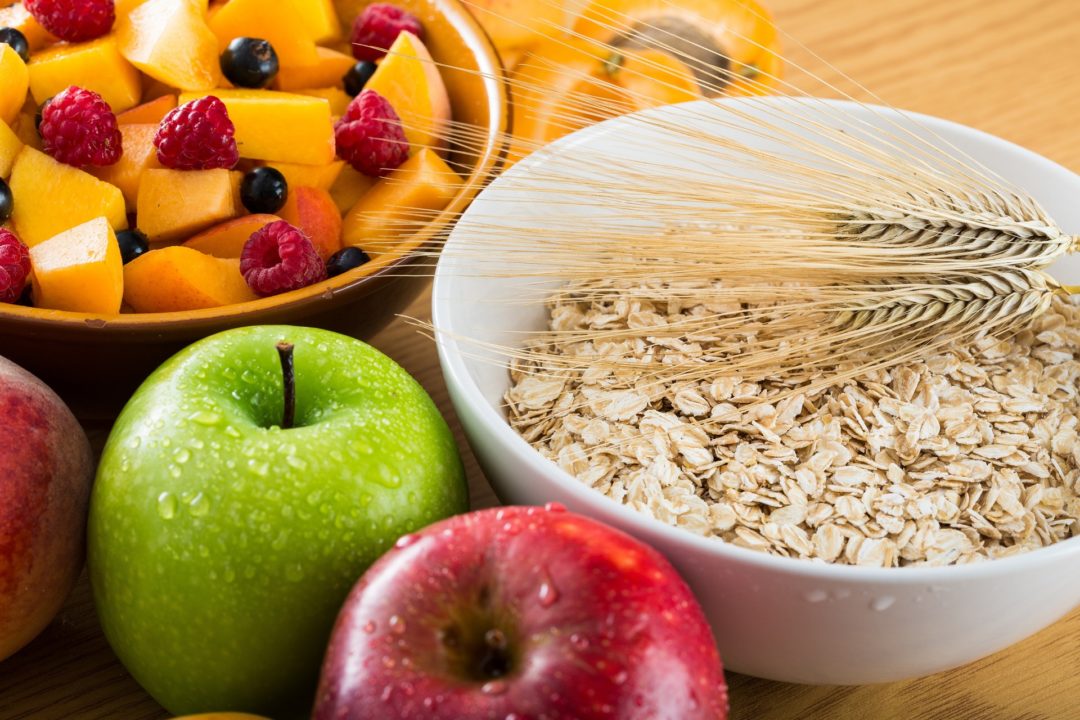In other words, fiber is incredibly important. And almost no one is getting optimal amounts of it.
So now let’s talk about what fiber is, where it’s found, and how to get more of it.
There are three kinds of fiber:
Insoluble fiberis what your grandmother was talking about when she said to eat “roughage.” It doesn’t break down in the gut, so it acts as a bulking agent and is good for reliving constipation.
Soluble fiber does break down in the gut. It’s specifically broken down by good bacteria which convert it into short-chain fatty acids (SCFAs), the most important of which is butyric acid (also known as butyrate).
Why is this so important? Because the cells that line the gut depend on butyrate for food. “Butyrate has been around in the mammalian gut for so long that the lining of our large intestine has evolved to use it as its primary source of energy,” writes obesity researcher and neurobiologist Stephen Guyenet, Ph.D. “It also has potent anti- inflammatory and anti-cancer effects.”
Butrate—or butyric acid—supplements are frequently used in inflammatory bowel diseases, such as ulcerative colitis and Crohn’s disease. If you’re not getting enough soluble fiber (and resistant starch, as we’ll see in a moment), you’re probably not making enough butyric acid.
Resistant starchis the third kind of fiber, so named because it literallyresists breakdown (or digestion). And it’s currently getting a lot of research attention. Instead of being broken down by enzymes like regular old starch, resistant starch makes its way directly through the small intestine and winds up in the colon, where—much like soluble fiber—it becomes food for good bacteria in the gut (sometimes called “probiotics”).
Resistant starch is the colon cells’ favorite food. Gut bacteria create more butyric acid (butrate) from resistant starch than they do from any other fiber. And the main source of butryic acid in the body comes from the metabolism of resistant starch. No wonder the colon cells love it.
Remember, butryic acid is pure joy to the cells that line your gut, and it keeps those cells healthy. Theoretically at least, that means less chance of leaky gut and all the myriad of problems that can accompany it. A healthy, well-fed gut lining helps make for a healthy microbiome. That’s one reason that soluble fiber and resistant fiber are both often known asprebiotics—they feed theprobiotics that live in your gut.
All prebiotics are fiber--- but not all fiber is prebiotic. The indigestible, insoluble kind your grandma called “roughage,” although important, is not prebiotic fiber because it can’t be broken down and metabolized into short- chain fatty acids by the good bacteria in your gut. Prebiotics, on the other hand, can be broken down by those bacteria and in fact are what keep those good bugs alive and thriving.
We now know how important a diverse and thriving microbiome is, and how important gut health is to health in general. Making sure the gut cells are nourished with prebiotic fiber—and its metabolite, butyric acid—should be a high priority for anyone wanting to get and stay healthy. Feeding those cells resistant starch and soluble fiber is a good beginning!
Interesting factoid: In 1981, theAmerican Journal of Clinical Nutritionpublished a paper by Thomas Almy, M.D., called “The Dietary Fiber Hypothesis.” The “Fiber Hypothesis” as it’s now called, basically put forth the notion that high- fiber diets were protective against a potential host of diseases. But researchers recently pointed out that some of the low-risk African populations that gave rise to the fiber hypothesis in the first place didn’t so much consume high-fiber diets as they did diets high in resistant starch.
Food sources of resistant starch include white beans, chickpeas, lentils, rolled oats, peas, black beans, red beans, kidney beans, unripe bananas, and potato starch. Food sources of soluble fiber include beans, oatmeal, Brussels sprouts, apples, nuts, blueberries, oranges, and flaxseeds. Food sources of insoluble fiber (known to grandma as “roughage”) include the seeds and skins of fruits (eat the peel!), avocados (especially Florida avocados), wheat bran, and brown rice.
Jonny Bowden, “the Nutrition Myth Buster” is a board-certified nutritionist and the
 best-selling author of 15 books including The Great Cholesterol Myth, Living Low Carb, the 150 Healthiest Foods On Earth and Smart Fat. To learn more about healthy living, motivation and nutrition, visit jonnybowden.com.
best-selling author of 15 books including The Great Cholesterol Myth, Living Low Carb, the 150 Healthiest Foods On Earth and Smart Fat. To learn more about healthy living, motivation and nutrition, visit jonnybowden.com. Note: The statements presented in this column should not be considered medical advice or a way to diagnose or treat any disease or illness. Dietary supplements do not treat, cure or prevent any disease. Always seek the advice of a medical professional before altering your daily dietary regimen. The opinions presented here are those of the writer.
Posted on WholeFoods Magazine Online, 6/1/2017










